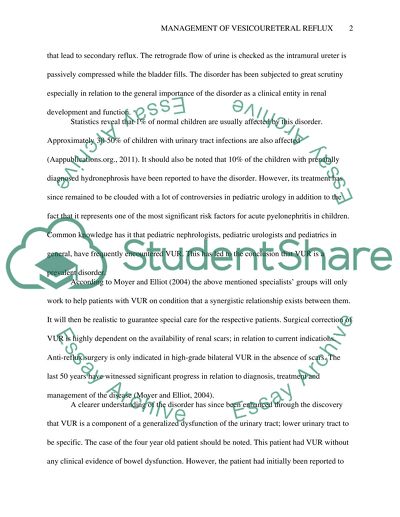Cite this document
(“Management of vesicoureteral reflux in the child over one year of age Research Paper - 1”, n.d.)
Management of vesicoureteral reflux in the child over one year of age Research Paper - 1. Retrieved from https://studentshare.org/health-sciences-medicine/1581179-management-of-vesicoureteral-reflux-in-the-child-over-one-year-of-age
Management of vesicoureteral reflux in the child over one year of age Research Paper - 1. Retrieved from https://studentshare.org/health-sciences-medicine/1581179-management-of-vesicoureteral-reflux-in-the-child-over-one-year-of-age
(Management of Vesicoureteral Reflux in the Child over One Year of Age Research Paper - 1)
Management of Vesicoureteral Reflux in the Child over One Year of Age Research Paper - 1. https://studentshare.org/health-sciences-medicine/1581179-management-of-vesicoureteral-reflux-in-the-child-over-one-year-of-age.
Management of Vesicoureteral Reflux in the Child over One Year of Age Research Paper - 1. https://studentshare.org/health-sciences-medicine/1581179-management-of-vesicoureteral-reflux-in-the-child-over-one-year-of-age.
“Management of Vesicoureteral Reflux in the Child over One Year of Age Research Paper - 1”, n.d. https://studentshare.org/health-sciences-medicine/1581179-management-of-vesicoureteral-reflux-in-the-child-over-one-year-of-age.


